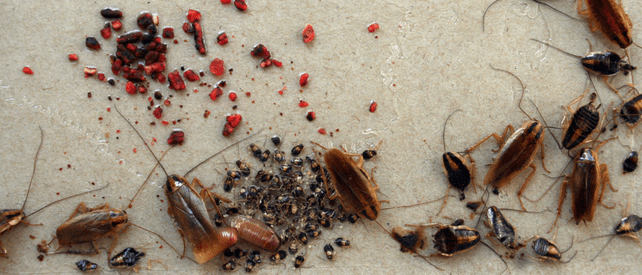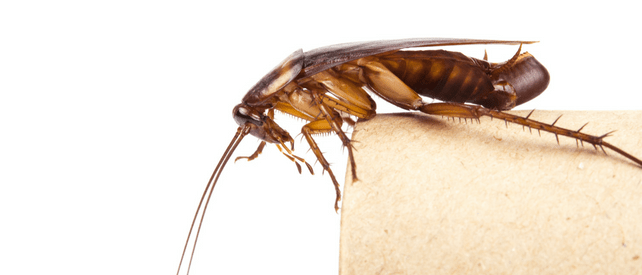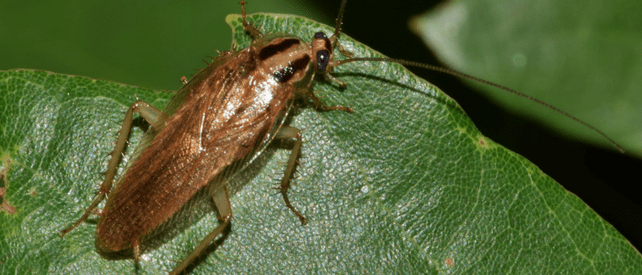Where Do Cockroaches Lay Eggs? How To Stop Their Spread

You started to look into how to get rid of cockroaches, but then you got swept up into another home project and your pest control efforts got put on the back burner.
Before you know it, you saw another roach–this time in your bathroom. After another month, you noticed one of these gross creatures show back up in the garage.
Clearly, these cockroaches aren’t going away. You need to find the eggs. A nest. How do you know where to look?
Below, we’ll share some of our hard-earned knowledge about cockroach behavior, focusing specifically on eggs and nesting behavior, how these creatures spread and what you can do to stop them for good.
The most common cockroaches here in Austin are German cockroaches and American cockroaches, so let’s talk a little bit about them first.
Understanding and Identifying Cockroaches
Did you know there are 55 different species of cockroaches found in America? Probably not. Why? Because most people will only ever come into contact with a few of them: Oriental, Turkestan, smoky brown, brown banded and the aforementioned German and American varieties.
Of those, you are most likely to have run-ins with German and American cockroaches, so you’ll need to learn more about them if you want to practice your own roach control.
German Cockroaches are probably the species that will bother you the most. Why? Similar to brown banded cockroaches, German roaches prefer indoor environments. Oriental Cockroaches are somewhere in between, as they are as comfortable in damp woodpiles and drains as they are in garages and basements, so they’re another problem species for many homeowners.
The German variety is so much more prevalent, though, that if you come across a roach in your house, it’s a pretty good bet that it’s a German cockroach. People tend to find these creatures in bathrooms, kitchens or food prep and storage areas. They’re light brown, about half an inch long, and have two dark stripes on the section right behind their head.
Although German cockroaches have wings, they can’t actually fly. So, you don’t have to worry about them suddenly buzzing around your face and the inevitable nightmares that would follow.
Speaking of nightmares, let’s talk about the other type of roach that you may see: the American cockroach. First, you should know that you are mostly likely to run across this type of cockroch in areas where food is prepared. That means kitchens, grocery stores, restaurants and bakeries. Yuck!
Ready for more bad news? Well, for roaches, they’re giants–two inches long! Worse, these large, reddish-brown critters have working wings, meaning they can fly if you startle them. Yikes!
Moreover, while they tend to live outside, it’s not uncommon for them to find their way inside in search of nourishment or for protection from extreme weather. If your property becomes a successful food source, watch out.
Regardless of which species you’re dealing with, all roaches are pests that can spread bacteria and disease, so you’ll want to do everything in your power to get rid of them as soon as possible.

What You Should Know About German Cockroach Eggs
Now that you know more about these pests, let’s talk more about the start of their life cycle: the eggs. Roach eggs are bound together in a case called an ootheca. Other insects, including praying mantises, lay these protective cases which can hatch into several hundred baby roaches.
Identification
If you find something and are wondering if it’s a German cockroach egg, look for capsules that are purse-shaped, light brown, and ¼ of an inch long at the most.
Timeline
You can expect each female German roach to produce an egg capsule around every six weeks. These capsules typically take about 28 days to hatch. No wonder a cockroach population can develop so quickly!
Location
Females generally like to deposit their egg capsules into protected locations, such as crevices. However, they tend to carry them until close to hatching, and sometimes the eggs will even hatch while they are still carrying them. That means that you might find German cockroach eggs anywhere these creatures hang out, including in your bathroom and kitchen, under your sinks, near your pipes, under drawers and in your the dark recesses of your pantry.

What You Should Know About American Cockroach Eggs
So what about American roaches? What is important to know about the eggs of these types of cockroaches?
Identification
Not surprisingly, American cockroach egg cases are bigger than those of the German variety. Whereas the latter species only reach 1/4 of an inch in length, American eggs are usually around 3/8 of an inch long.
Another difference? While the egg cases are brown when the female lays them, after a day or two they turn black. Sometimes the cases will be glued to the surface where they are laid.
Timeline
Eggs that belong to American roaches are carried for about six days before being deposited. Once the mother does this, the babies will continue to incubate for roughly another two months, and possibly longer.
Location
Where do American cockroaches lay their eggs? For the most part, in protected areas that are close to food sources. Since these pests are omnivorous and eat everything from milk and fermenting fruit to cosmetics, glue and soap, this gives them a lot of options. You might see American cockroach oothecae in your compost, near wood piles, in your garbage or even in your attic.

Do Cockroaches Lay Eggs in Clothes?
Another common question we hear from customers is if roaches will lay eggs in our clothing.
The short answer to this question is: sometimes. As mentioned above, roaches tend to deposit their eggs in crevices and other protected areas.
So, for example, if you have boxes of old clothes, you may have an attractive deposit point for cockroach eggs. Additionally, roaches tend to like nesting in places that are more likely to absorb the strong odor they emit. That means areas where you store cardboard, paper and wood are likely hiding spots for roches. If you keep your clothes in a wooden dresser, they are more at risk.
However, what’s more likely is that the capsule or case won’t be deposited in your clothes, but rather hidden at the back of the drawer itself where it is less likely to be disturbed by, say, you taking out your clothes to wear them.
If you have roaches in your clothing drawer, though, does that distinction really matter to you?
The best way to protect your clothes is to keep them in a more open area, such as hanging in a closet. And if you have noticed roaches around a dresser, definitely target that as an area to place traps.
Finding A Cockroach Nest: What To Look For
Knowing what eggs look like is all well and good, but since cockroaches hide them, that may not help much in locating those eggs and getting rid of them.
Luckily, there are signs that can tell you a nest is nearby.
Live (Or Dead) Cockroaches
This one’s obvious, right? If you notice lots of cockroaches (living or dead), it’s a good sign that a nest is nearby. In fact, dead may be better than alive, since they tend to hide pretty well and scatter at the first sign of approach.
Skins
As they grow, cockroaches shed their skins. Find a bunch of shed skins? Their owners may be close–moreover, it may indicate that there are unhatched eggs in the vicinity.
Droppings
Seeing a lot of tiny little black marks in a particular area? If you know you have cockroaches, that’s probably roach feces. Gross, but also a good indicator that the nest may be close by.
A Musty Odor
Cockroaches smell. Seriously. So, if there’s an area of your home or property that seems to emit a strong, musty odor, it could be a sign that a nest is close.
Where do you look for these signs? Under or behind appliances. In cracks inside of or behind cabinets. Near plumbing in general and in drains specifically. You may also want to inspect inside of any wall cavities where you know moisture has gotten in.
Outside, you can look under logs or loose bark for eggs, in wood piles and under shingles or siding.

How Fast Do Roaches Spread?
There is no easy answer to this question, as reproductive rates vary, depending on the individual cockroach species.
German Cockroaches
German cockroach egg capsules usually have anywhere from 30 to 48 eggs inside them. Females of the species typically have between four and eight capsules during their lifetime. So, a single female will produce anywhere between 120 and 384 young.
How long does this take? The lifespan of an adult female is about half a year, so assume two generations each year, or between 240 to 768 young. If you have an infestation, it’s not uncommon to see upwards of 10,000 roaches produced within a year.
In other words, too many.
American Cockroaches
This species isn’t quite as fast in terms of reproduction, but the bad news is that they live a lot longer. American cockroaches take around 600 days to develop, then live as adults for another one to two years.
How many new roaches are these live roaches creating? With around 12 young in every egg case, a female and her offspring can produce 800 additional cockroaches in just a single year.
Frightening, isn’t it?
Chem-free Can Eliminate Your Roach Problem
Now that you know more about how cockroaches operate and where they live, it’s time to start thinking about what you can do to send them packing. There are over-the-counter remedies, but for tough infestations, often they are not enough. Plus, you might not feel comfortable using sprays and other treatment methods that aren’t all that safe for the environment, pets, or little ones. Of course, simply killing roaches off won’t stop another population from taking their place in the future. At Chem-free, our knowledgeable technicians are trained to not only eradicate your current infestation safely and effectively, but also arm you with ways to roach-proof your property to prevent reentry. Even better, we’ll handle all the dirty work, so you don’t have to. Contact us today to schedule a service.
Need Help Managing Pests?
Chem-Free offers both effective, low-impact pest control options and preventative measures to help avoid future infestations. Contact us today for a free estimate!


